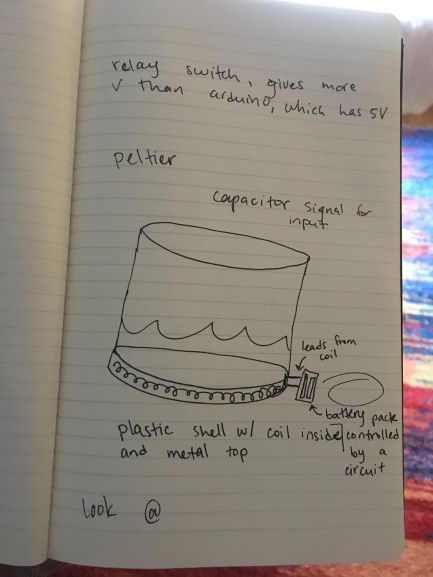This week my ideas for my final project really grew. I was working on a heating element and how to make it so that it is hot enough to boil water and also so that it is safe, which I realized is really difficult but also very important
Week 10
Output Devices
The video below is what originally inspired me to create my own heating element- it's relatively easy to do and then I can control the variables like length and resistivity (theoretically)
I also spent a lot of time thinking about the entire cirucit of my final project. Below is a basic basic wire diagram I drew for this week. I realized I could keep making all these smaller circuits as weekly projects but I'm going to need one larger integrated circuit for my final and I wanted to focus more on how that would work. I also wrote the code that wold control the output portion of this project and am working on integrating it with the input portion because they really go hand in hand for my device.

I got a bit caught up in the mechanics of the heating element this week. Anywyas, here is a basic sketch of the layout of my output device. This is something I drew while brainstorming with Rob about how this output device would work. I want a heating element in the base of a water vessel and it will have leads sticking out to connect to the larger circuit. Something we were debating is whether to draw from a wall socket or whether a relay switch would be better. I have some math below that I was thinking about and I'm still trying to figure out how much current and how much power will give me the temperature I want in an acceptable time frame. This is dependent a lot on the coil I make and its properties, which I am working on
If I use an outlet you have 120V AC which then generally gets turned into 9-12 V DC through an adapter. So if the max draw from an outlet is ~12V, I will max the coil's draw at 6V because I don't want to trip the circuit. Voltage isn't the main concern though, current, I, is. I also know that I can pull 1800 W from a wall socket before I trip the circuit. It takes about 1200 J (1J/s = 1 W) to raise 1 kg of H2O 1 degree C. I'm pretty sure I'm going to have to step up the math for this from P=IV and V=IR to something more involved.
